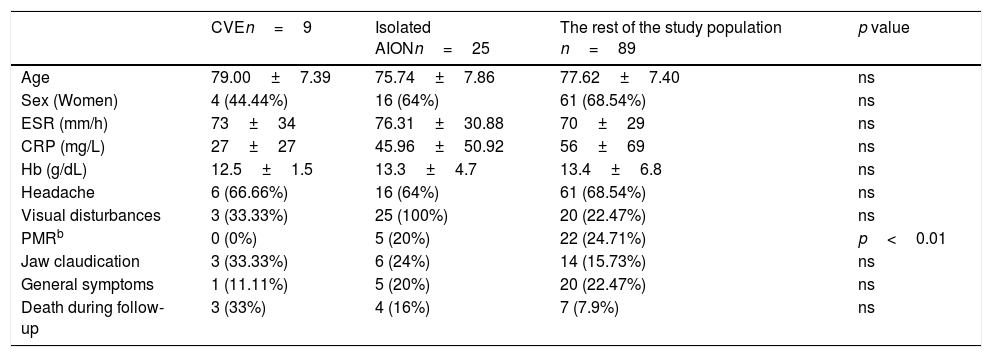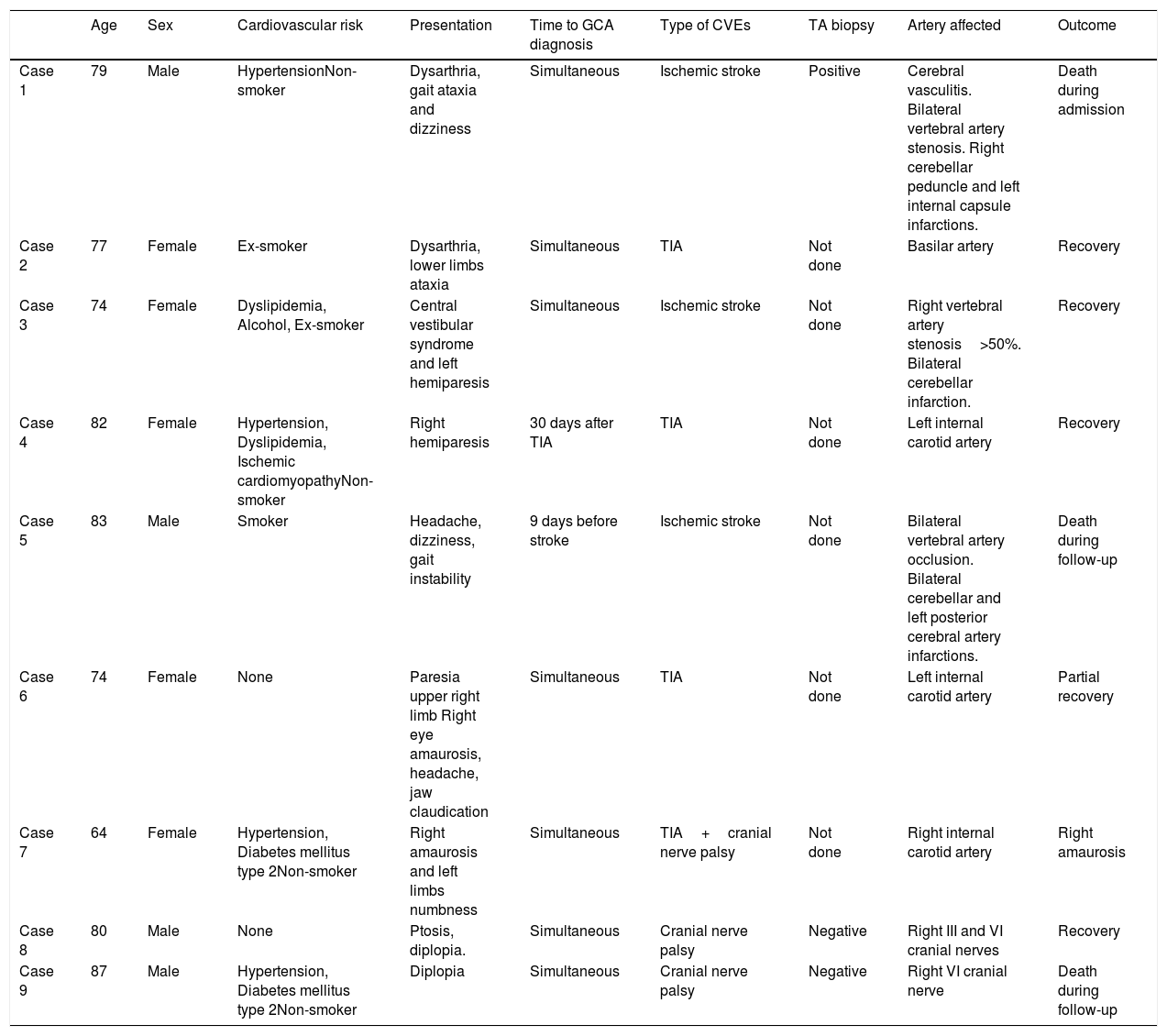To determine the prevalence of cerebrovascular events (CVE) in giant cell arteritis (GCA) and to alert clinicians to the importance of early detection of CVE in this disease.
MethodsRetrospective observational study involving a cohort of GCA patients. Demographic, clinical and laboratory data were collected. All patients fulfilled the American College of Rheumatology (ACR) 1990 GCA classification criteria and had a positive ultrasound test for GCA in agreement with the EULAR recommendations. Demographic and clinical parameters were recorded with special attention paid to ischemic cranial events.
ResultsWe studied 123 consecutive GCA patients, 74 (60.2%) women with a mean age of 79 years. Twelve patients (9.75%) suffered from neurologic symptoms other than AION, of whom 9 (7.3%) experienced ischemic events related to GCA and 3 (2.44%) likely experienced CVE due to other common causes. Of the 9 patients with CVE caused by GCA, 5 were diagnosed with transient ischemic attacks (TIAs), 2 with ischemic stroke, and 2 were cases involving cranial nerve palsies. High rates of mortality were found in patients with a TIA or stroke, while polymyalgia rheumatica (PMR) appeared to confer some protection against ischemic pathologies in GCA patients.
ConclusionsStroke and TIA are common presentation patterns associated with GCA and should be suspected in all CVE-related cases with high acute-phase reactants commonly present in the elderly. This ischemic subgroup exhibited a higher mortality rate.
Determinar la prevalencia de los accidentes cerebrovasculares (ACV) en la arteritis de células gigantes (ACG) y alertar a los facultativos sobre la importancia de la detección temprana de los ACV en esta enfermedad.
MétodosEstudio observacional retrospectivo que incluyó una cohorte de pacientes de ACV. Se recabaron los datos demográficos, clínicos y de laboratorio. Todos los pacientes cumplieron los criterios de clasificación de ACV del American College of Rheumatology de 1990, y su ecografía fue positiva para ACG con arreglo a las recomendaciones EULAR. Se registraron los parámetros demográficos y clínicos, prestándose especial atención a los episodios cerebrales de isquemia.
ResultadosEstudiamos 123 pacientes consecutivos de ACG, de los que 74 (60,2%) eran mujeres, con una edad media de 79 años. Doce pacientes (9,75%) tenían síntomas neurológicos distintos a AION, de los cuales 9 (7,3%) evidenciaron episodios isquémicos relacionados con ACG y 3 (2,44%) experimentaron previsiblemente ACV debido a causas comunes. De los 9 pacientes con ACV causado por ACG, 5 fueron diagnosticados de accidente isquémico transitorio (AIT), 2 de accidente isquémico y otros 2 de parálisis del nervio craneal. Se encontraron altas tasas de mortalidad en los pacientes con AIT o ictus, mientras que la polimialgia reumática pareció conferir cierta protección frente a afecciones isquémicas en los pacientes de ACG.
ConclusionesLos ictus y los AIT son patrones de presentación comunes asociados a ACG y deberían sospecharse en todos los casos relacionados con ACV con altos reactantes de fase aguda que se presentan comúnmente en los ancianos. Este subgrupo isquémico reflejó una alta tasa de mortalidad.









